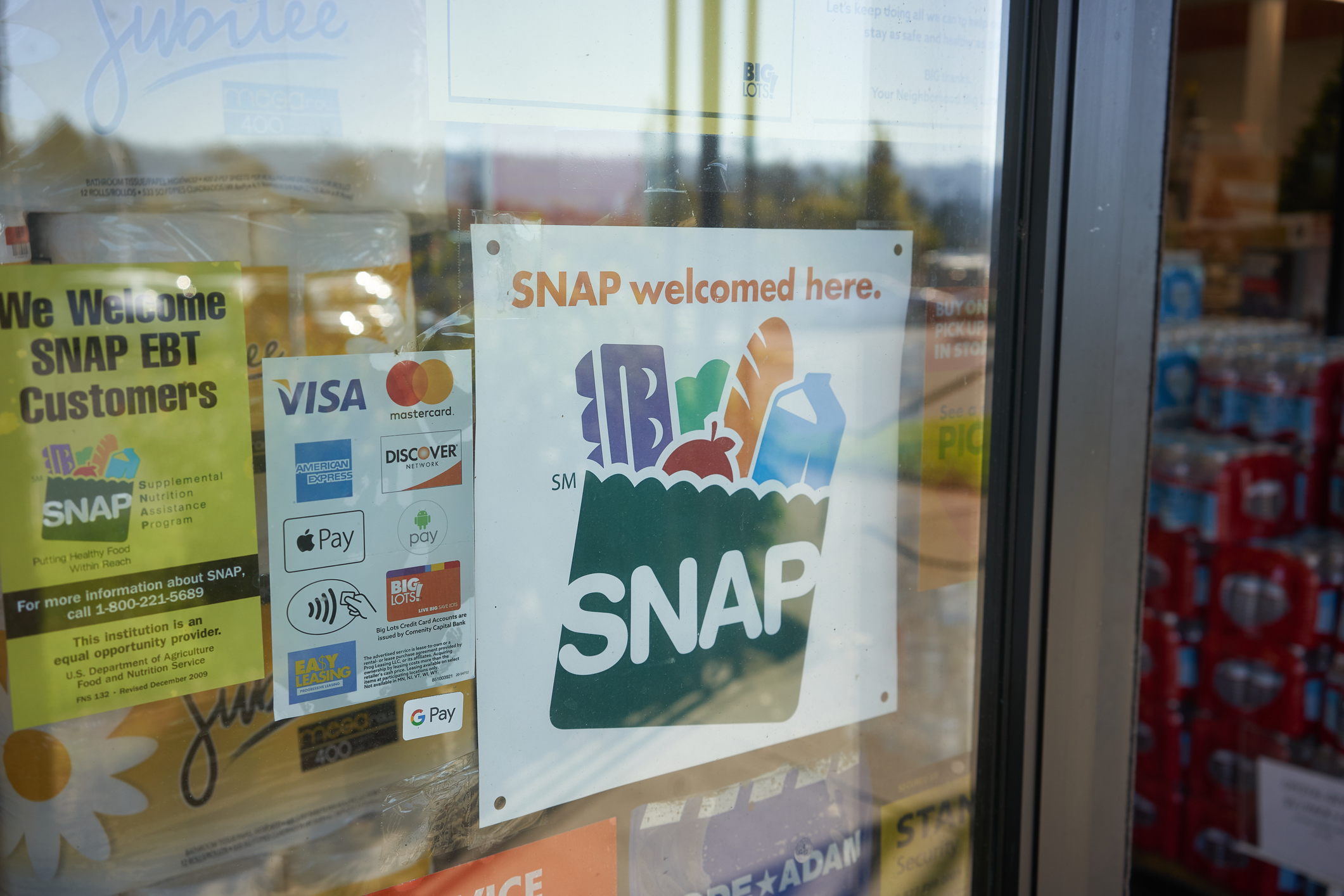As city leaders across the country work to better understand the impacts the One, Big, Beautiful Bill (OBBB) Act will have on their residents and the economic future of their communities, they’ll uncover an oversized impact on food access, both now and into the future.
For instance, federal food programs increase the financial stability of families, allowing them to increase their purchasing power, which stimulates local economies and supports increased local employment. While cities, towns and villages do not control many food benefit programs directly, they are critically involved in and support food access. This means they will be the first line of defense as residents lose access to federal food benefits and look to local sources to meet their needs.
Through a national scan, NLC has found that cities, towns and villages, regardless of size, have been playing an essential role in supporting resident awareness of and access to federal and state benefit programs. The scan found that benefits awareness and access programs make up some of the longest-running programming that cities support or operate directly (67% of respondents noted their municipalities started this work over 10 years ago).
Key Program Changes and Impacts
Supplemental Nutrition Assistance Program (SNAP)
The Congressional Budget Office’s (CBO) dynamic analysis and cost estimate shows that the bill cuts federal funding for the Supplemental Nutrition Assistance Program (SNAP) by $279 billion through 2034. SNAP, formerly known as food stamps, is administered by the U.S. Department of Agriculture and provides a monthly benefit via an electronic benefit card to help participants purchase food. The program has eligibility requirements, including monthly income limits and limits the amount of assets, such as cash, money in a bank account or the value of a vehicle. The average monthly SNAP benefit among all households was $332 in FY 2023 (PDF) where the average household had a monthly net income of $527. Key changes to the SNAP program from the OBBB, shown in this cost estimate, include:
- Shift of Costs to States: By shifting cost burdens from the federal government to state government, many states will be unable to maintain programs at current levels. The Urban Institute estimates that 22.3 million US families would be affected, losing some or all of their SNAP benefits. Additionally, as states take on more of the costs of SNAP, they will have to make decisions about the program overall and what benefits can be offered. The two biggest impacts to states include:
- Increase in State Administrative Costs: Starting Oct. 1, 2026, states will be required to support 75% of the administering SNAP.
- State Matching Fund Requirement: Starting Oct. 1, 2027, for the first time, states will be required to contribute to the cost of SNAP if their payment error rate is above 6 percent.
- Expanded Work Requirements: Expanded work requirements reduce the number of individuals who may qualify for the program and place an additional administrative burden on states to administer the benefit. The Urban Institute reports that the expanded work requirements will result in 2.7 million families and 5.4 million individuals losing some or all of their SNAP benefits a month, with an average loss of $254 per family per month. The changes to work requirements include:
- Able-bodied adults without dependents will be required to complete 80 hours of work or community service activities per month, and caregivers with children ages 14 and older will be required to fulfill these requirements as well.
- Removes work requirement exemptions for veterans, former foster youth and people experiencing homelessness, and increases age limits for work requirements from 54 to 64. The law also restricts states’ ability to waive these requirements.
- Eligibility Restrictions: Removes eligibility for refugees and asylees who have not obtained lawful permanent resident status.
- Reduces Future Value of SNAP: Limits future updates to the Thrifty Food Plan, which is used to set benefit levels for SNAP, SUN Bucks/Summer EBT and the Nutrition Assistance Program in Puerto Rico. This may cause benefit levels to fall below rising food costs.
- Limits Standard Utility Allowance (SUA): Standard utility allowances are fixed deductions that have been historically used by states when calculating SNAP benefits that simplifies the calculation of shelter costs for households with utility expenses and decreases the amount of paperwork that applicants had to provide. The bill makes two key changes impacting this allowance:
- Restricts automatic eligibility of SUA for recipients of the Low-Income Home Energy Assistance Program. Residents who are disabled or who are veterans are exempt from this provision.
- Prevents the cost of basic internet service from being included in the application.
In addition to the above changes and impacts, SNAP changes will also:
- Impact grocers and food retailers across the country, thus impacting access to food for all residents if stores are forced to close due to shifts in demand. The National Grocers Association (NGA) estimates that over the next six months, SNAP changes could decrease sales by 6.7% with this impact growing annually.
- Affect the Community Eligibility Provision (CEP) that supports school meals. CEP allows schools to provide every student with breakfast and lunch without requiring the household to submit school meal applications.
Supplemental Nutrition Assistance Program Education (SNAP-Ed)
SNAP-Ed is a program that provides nutrition education classes, supports social marketing campaigns and promotes physical activity to prevent diet-related chronic disease. The program also supports community partners that can help make healthy food choices easier and accessible to low-resource communities (i.e., community gardens). The OBBB eliminates funding for SNAP-Ed starting in October 2025.
What Cities Can Do Now
As city leaders continue to lead the way to find ways to support their residents’ financial stability and access to food, in the wake of the OBBB it will require more involvement to address increased community needs and the downstream impacts on youth education, employment and the municipality’s financial future. Recommended areas of action for city leaders include:
- Map out who provides nutrition services and how it will impact your municipality: Gain a better understanding of which organizations receive SNAP-Ed funding in your community and what impact funding elimination will have on your residents.
- Understand your residents and their use of these programs through data and listening: Connect with neighborhood groups and human service nonprofits to convene residents in your community who utilize SNAP and other antihunger services to learn more about the impact these programs have on their families.
- Connect with food retailers in your community: Engage with your local or regional independent grocers to see how the projected 6.7 percent drop in SNAP sales could affect their business and explore if there are any options to decrease the impact.
- Engage benefit administrators: Engaging benefit administrators is an important step to better understand how they will respond to the new legislation and to share what was learned from engaging with your community, both residents and business owners.
- Support local access: Map out where your farmers’ markets, fresh food vendors and mobile market locations are. Confirm if they offer SNAP matching programs at their locations. Share this information with your residents.
- Expand opportunities for volunteering/service: With increased work requirements, cities have an opportunity to share activities that would satisfy them, including volunteer activities that would benefit their community as a whole via regular communication channels.
Join NLC’s EMPN Network
NLC’s Economic Mobility Peer Network is the premier way to connect with other municipalities, learn from experts and share promising practices in the economic mobility field. In addition, EMPN members are eligible for unique grant opportunities and there’s no cost to join.








